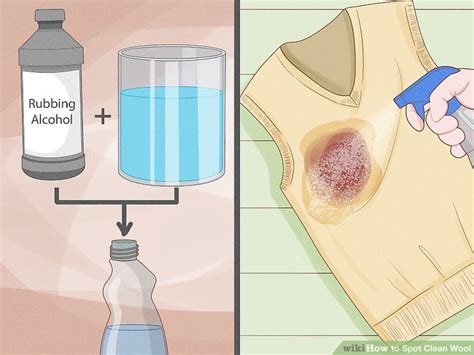Spot Cleaning Wool: Safe & Natural Methods
Wool, a luxurious and naturally durable fiber, is prized for its warmth, softness, and breathability. However, accidents happen, and stains can appear on your cherished wool garments or home furnishings. Knowing how to effectively spot clean wool without damaging the delicate fibers is crucial. This guide explores safe and natural methods for tackling various wool stains, preserving the beauty and longevity of your wool items.
Why Choose Natural Spot Cleaning Methods for Wool?
Harsh chemicals found in many commercial cleaning products can damage wool fibers, leading to shrinkage, discoloration, or weakening of the fabric. Natural methods, on the other hand, are gentler and less likely to cause harm. They are also environmentally friendly, aligning with sustainable cleaning practices.
What You'll Need:
Before we begin, gather these essential supplies:
- Soft cloths or sponges: Microfiber cloths are ideal for their gentle absorbency.
- White vinegar: A mild acid that effectively neutralizes many stains.
- Dish soap: A mild, unscented dish soap is best.
- Cold water: Always use cold water for wool cleaning. Hot water can cause shrinkage and damage.
- Baking soda: A natural deodorizer and absorbent.
- Soft-bristled brush: For gently lifting stains and removing excess cleaning solution.
Common Wool Stain Removal Techniques
Here are some proven natural methods for removing common stains from wool:
1. How to remove a wine stain from wool?
Wine stains can be notoriously stubborn, but acting quickly is key. Blot (don't rub!) the stain immediately with a clean cloth to absorb as much wine as possible. Mix a small amount of cold water with a drop of mild dish soap. Gently dab the solution onto the stain, working from the outside in. Rinse with cold water and blot dry with a clean cloth. If the stain persists, repeat the process or try a solution of white vinegar and water (equal parts).
2. How to remove coffee stains from wool?
Coffee stains, like wine stains, respond best to immediate action. Blot up the excess coffee with a clean cloth. Make a solution of cold water and a tiny amount of dish soap. Gently apply the solution to the stain, blotting frequently to absorb the coffee. Rinse with cold water and blot dry.
3. How to remove grease stains from wool?
Grease stains require a slightly different approach. Sprinkle baking soda liberally onto the grease stain to absorb the oil. Let it sit for at least 30 minutes, then gently brush away the baking soda with a soft-bristled brush. If the stain remains, carefully dab with a solution of cold water and a tiny amount of dish soap. Rinse and blot dry.
4. How to remove mud stains from wool?
Allow the mud to dry completely before attempting to remove it. Once dry, gently brush away as much dried mud as possible with a soft-bristled brush. Any remaining stain can often be removed with a gentle solution of cold water and a small amount of dish soap, blotting carefully.
5. How to remove blood stains from wool?
Blood stains are best treated with cold water. Never use hot water, as it will set the stain. Rinse the area immediately with cold water, working from the outside of the stain inward. Gently blot dry with a clean cloth. If the stain persists, repeat the process or try a very diluted solution of hydrogen peroxide (test in an inconspicuous area first).
General Tips for Spot Cleaning Wool:
- Always test any cleaning solution in an inconspicuous area first: This will help prevent accidental damage to the fabric.
- Blot, don't rub: Rubbing can spread the stain and damage the wool fibers.
- Work from the outside in: This prevents the stain from spreading.
- Rinse thoroughly: Remove all traces of cleaning solution to avoid residue.
- Air dry: Never put a wool item in a dryer. Air drying is essential to prevent shrinkage and damage.
- Professional Cleaning: For stubborn or large stains, or for valuable wool items, it's best to seek professional dry cleaning services.
By following these safe and natural methods, you can effectively remove many common stains from your wool items, preserving their beauty and extending their lifespan. Remember, prevention is key – prompt attention to spills and stains is the best approach.

